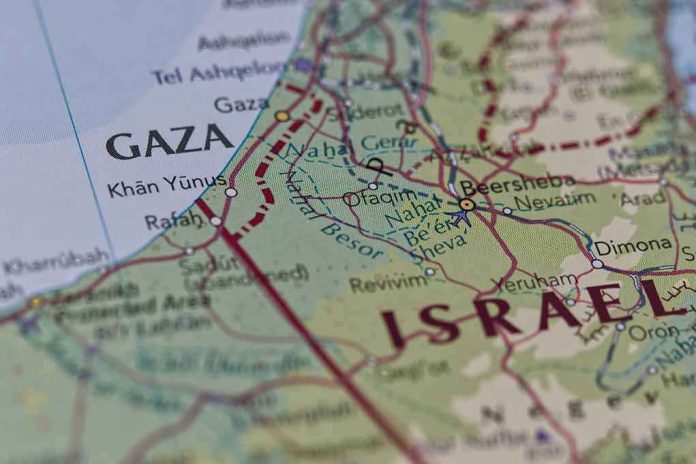
Donald Trump’s ambitious plan for the Gaza Strip could reshape the Middle East, sparking both hope and controversy.
Story Highlights
- Trump proposes U.S. administrative control over Gaza, aiming to transform it into the “Riviera of the Middle East.”
- The reconstruction effort in Gaza is estimated to cost $50 billion, drawing significant international attention.
- Trump’s plan includes potential resettlement of Palestinians, a factor that has sparked controversy.
- International stakeholders are divided on the implications of Trump’s proposals for regional stability.
Trump’s Vision for Gaza’s Future
In February 2025, President Donald Trump proposed an unprecedented plan for the Gaza Strip, suggesting U.S. administrative control to transform the war-torn region into a thriving coastal hub. Dubbed the “Riviera of the Middle East,” this initiative involves significant infrastructure development and economic investment, aiming to revitalize Gaza’s economy and provide stability in a historically tumultuous area. Trump’s vision is both ambitious and polarizing, reflecting his characteristic boldness in foreign policy.
Critics, however, point to the complexities of such a transformation, considering Gaza’s geopolitical challenges and the potential displacement of Palestinian communities. While Trump has reassured that no Palestinians would be forcibly removed, concerns persist about the social and political impacts of his proposal. The plan has garnered support from Israeli Prime Minister Benjamin Netanyahu, who sees it as aligning with Israel’s strategic interests.
International Reactions and Challenges
The international community remains divided over Trump’s Gaza plan. Supporters argue that the initiative could bring much-needed economic opportunities and stability to the region, creating jobs and improving infrastructure. However, opponents caution against the potential for increased tensions, highlighting the risk of social upheaval due to proposed resettlement efforts. The Palestinian Authority and Hamas have expressed skepticism, emphasizing the need for respecting Palestinian sovereignty and rights.
Despite the controversy, Trump remains steadfast in his commitment to the project, expressing pride in his involvement and willingness to visit Gaza to oversee progress. The initiative’s success hinges on navigating the intricate political landscape and securing broader international backing.
Future Implications for the Region
If successful, Trump’s initiative could dramatically alter the economic and political dynamics of the Middle East, potentially setting a precedent for U.S. involvement in regional reconstruction efforts. In the short term, the focus is on alleviating Gaza’s humanitarian crisis, but the long-term implications extend to regional peace prospects and the balance of power.
Ultimately, the outcome of Trump’s Gaza proposal will depend on its execution and the willingness of key stakeholders to collaborate on this ambitious reconstruction effort. As the situation unfolds, the world watches closely, eager to see whether Trump’s vision for Gaza can become a reality or if it will succumb to the region’s enduring challenges.
Sources:
ABC News – Trump declares end to Israel-Hamas war
White House – Historic moment: Trump signs Gaza peace plan
Wikipedia – Trump’s February 2025 Gaza Strip proposal





